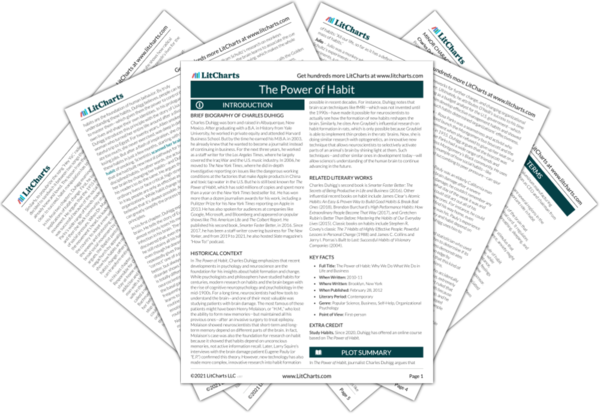The Golden Rule of habit change Quotes in The Power of Habit
His coaching strategy embodied an axiom, a Golden Rule of habit change that study after study has shown is among the most powerful tools for creating change. Dungy recognized that you can never truly extinguish bad habits.
Rather, to change a habit, you must keep the old cue, and deliver the old reward, but insert a new routine.
That’s the rule: If you use the same cue, and provide the same reward, you can shift the routine and change the habit. Almost any behavior can be transformed if the cue and reward stay the same.
Notice how closely this study hews to the Golden Rule of habit change: Even when alcoholics’ brains were changed through surgery, it wasn’t enough. The old cues and cravings for rewards were still there, waiting to pounce. The alcoholics only permanently changed once they learned new routines that drew on the old triggers and provided a familiar relief.
Often, we don’t really understand the cravings driving our behaviors until we look for them.
How do habits change?
There is, unfortunately, no specific set of steps guaranteed to work for every person. We know that a habit cannot be eradicated—it must, instead, be replaced. And we know that habits are most malleable when the Golden Rule of habit change is applied: If we keep the same cue and the same reward, a new routine can be inserted.
But that’s not enough. For a habit to stay changed, people must believe change is possible. And most often, that belief only emerges with the help of a group.












